Analog Science Fiction/Science Fact, November 1969: A Retro-Review
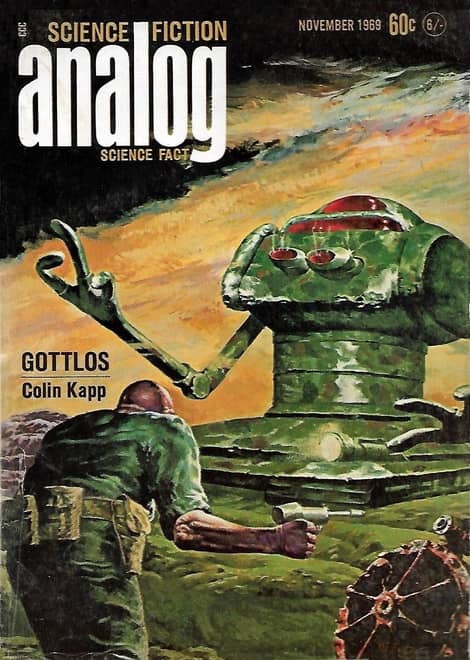 |
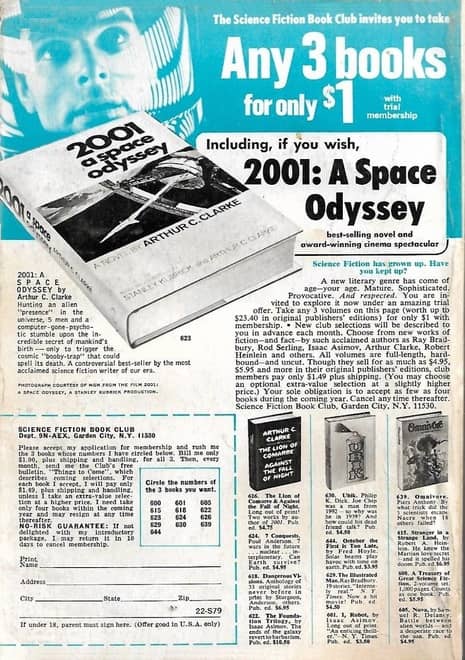 |
This is Part 5 of a Decadal Review of vintage science fiction magazines published in November 1969. The previous articles are:
Amazing Stories, November 1969
Galaxy Science Fiction, November 1969
The Magazine of Fantasy & Science Fiction, November 1969
Worlds of If, November 1969
So, one cannot be an SFF fan without hearing a few unsettling things about the greats of the genres. John Campbell is one of those greats, but I’ve heard that he got a little nutty toward the end of his run in 1971; a little hung up on Dianetics, psionics, dean-drives, and maybe he wasn’t sure this whole cigarettes-cause-cancer thing wasn’t nanny-state bunk. These things I’ve heard, and the November, 1969 issue of Analog pretty much confirms them. In its defense, the magazine does have three good stories.
[Click the images for Amazing-sized versions.]
Editorial — by John W. Campbell, titled, or dated 7/20/69
Campbell is, understandably, still quite giddy about the moon landing of July 20, 1969 and pushes back pretty hard against people who question the value of the endeavor. But he goes on a bit of weird tangent, railing against people who are questioning the value of the endeavor, and has special venom toward those who argue that the money could have been spent fighting poverty. His response veers into the idea that solving poverty “[…] runs contrary to the Nature of Things.” Which strikes me as somewhat short-sighted for a guy who drinks deep from the literature of the possible. Back to the actual moon landing, he makes a remarkable observation about, well, our observation:
In none of our science-fiction stories of the first trips to the Moon did we even imagine that the activities of the first men on the Moon would be fully televised for a world-wide audience — that the first human foot set on the Moon would do so on-camera.
Fiction — “Gottlos” by Colin Kapp, illustrations by Vincent DiFate. “Gottlos” inspired the cover and multiple internal drawings. In an unnamed country at an unnamed future, the horrors of total war has led to the creation of War Mecs — terrifying engines of destruction. Fiendish, a new and powerful war mec crosses no-man’s land with the intent of destroying an enemy base — which it does without much trouble. As he’s about to take the humans apart like so much pulled pork, an even more horrid machine, the titular Gottlos, gives him a humiliating beat-down; not only destroying Fiendish, but dissecting it. This forces Fiendish’s human operator, Manton, to set the war mec to self-destruct, and break his remote mental link with it.
The experience leaves Manton shaken, not just because he got beaten (badly), but that he lost a part of himself, the indestructible far-better-than-human part.
But the union of the two had been a different organism, surpassing vastly the normal casual integration of man and machine. Fiendish had been the gestalt of the two entities, and both had suffered adversity equally. The body of the warmec had ceased to exist in that final explosion, but its psyche still lived on. That part was Manton. The rest of him was dead. Even now the black fringes seemed to linger round the edges of his brain.
Gottlos, unstoppable and implacable, is on a mission, too. Crossing no-man’s land, it is on the hunt for Manton, playing a game of cat and mouse among the ruins of a devastated city.
Manton, understanding the gestalt, finally realizes what Gottlos is and what it is really doing. Gottlos is not remotely controlled, but is a human brain is trapped in the war mec, and is seeking someone that can understand it; that can shut it off.
As all the German terms would indicate, this was a remarkably bleak story, with Manton realizing that he, most likely, will end up either burned out or a brain in a war mec himself. This story gets some bonus points for the character of Dr. Rohm: a woman scientist and doctor as implacable as Gotltlos itself!
If Gottlos sounds a lot like the Ogre tank from Steve Jackson’s game of the same name, it is because Kapp’s story is the direct influence for the game, at least according to Colin Kapp’s Wikipedia page.
Article — “Telepathy — Did it Happen?” by J. B. Reswick and L. Vondonik. Man, this was a loooong article with charts and graphs and photos and everything. As mentioned above, Campbell was a bit of a sucker for this kind of thing… I didn’t have the heart or the time to read it.
Fiction — “Weapon of the Ages,” by W. MacFarlane, illustrated by Leo Summers. In a universe where libertarians run rampant, Peter Zoll, a man’s man and space trader extraordinaire encounters a spaceship shaped liked “crossed dumbbells,” gets his ass handed to him and crash lands on an uncharted planet of technological wonder peopled entirely by geriatrics.
There is a language barrier, there is a dementia barrier, but Zoll finally gets them to understand that hell is coming right behind him. Even with this information getting across, the oldsters are unmoved, taking him (slooowly) to a device — a strange super-computer that they use to look at the enemy fleet, then they kick it into weirdness overdrive.
The coppery part of the surface convoluted and the striped section crawled slowly away: it was a kidney with kidney stones in orbit around it. At the same time, with equal clarity and definition, he swooped through star-scarred space toward the great black crossed dumbbell fleet.
There was a third level of reality. The ageless woman at his side looked at him compassionate, or was it pity in her amber eyes.
The avian invaders are reduced to eggs, the geriatrics are reduced to children, and man’s man Petr Zoll is reduced to a baby. I’m not sure if this story was reaching for a larger message or not. That all the people were old at the start of the story, did that imply that they had not had to use the device in like 70 years? Do they use it periodically anyway? It didn’t really hang together very well.
Fiction — “The Ambassadors” by J.B. Clarke, Illustrated by Leo Summers.
Things heat up at Special 8 when, not just a new race but a new galactic civilization introduces itself to the Web — the existing galactic civilization that includes Earth. These so-called Golans… there are things that just don’t add up about them and their story. For example, why would the Golans come to Galcenter in a retro-fitted Web ship and not one of their own? Why are they so cagey about the boundries of their empire, eh? Answer me this: for all the technological wonders they claim to posses why don’t they demonstrate any?
The Web needs answers, dammit! And when the Web needs answers it turns to Special goddamn 8, and when Special goddam 8 needs answers it turns to Edward motherfilking Carnes! Carnes is off to investigate, accompanied by the Chairman of the Grand Council, Skorva, a tiger-like Spican.
These Golans are slippery. Always one step ahead:
”It is not our purpose to belittle your accomplishments,” [the Golan] said, speaking slowly as if each word were being picked with meticulous care. “But it is obvious that your political and ethical systems exist as much to protect you from each other, as they do for mutual benefit. Thus it is we who must be selective in what we give, as must any entity who is dealing with one less mature.”
Some diplomat, thought Carnes wryly as he mentally substituted “adult” and “a child” in place of Cembar’s “entity” and “one less mature.” In these exalted chambers of the Grand council of the Galactic Web, the Golans had so far won every round in this battle of ideas. But in spite of their amazing performance, the aliens had not yet produced any tangible proof of their superiority, and apparently had no intention of doing so.
Damn their blasted logic!
Carnes and Skorva are taken to the Golan administration planet of Exor — a gritty industrial planet shrouded in a near-toxic haze of severe volcanic activities — a planet whose skies are crisscrossed with cargo ships from all over the Golan Empire.
More discrepancies! The “volcanic activity” seems bogus, according to Skorva’s cat-like nose. And why, for a galactic empire, are there only three intelligent races represented? A chance observation by Carnes of some of Exor’s indigenous insect life provides the vital clue- -the three races are actually three sexes; and they are not technologically advanced, but a bit behind and hoping to get into the Web quick before anybody can figure out they’re poisoning themselves with the pollution from their non-stop industrial activity. And they would have gotten away with it, too, if it hadn’t been for that meddling Edward motherfilking Carnes!
This was a fun story although a bit thick with names.
Fiction — “Shapes to Come” by Edward Wellen, Illustration by Vincent DiFate. Orin Ingram lives a life of scientific seclusion on the Moon. His officially sanctioned goal? Creating space-hardy spores that re-program memories to make humans appealing.
For a moment he stood off from himself and with a tight smile, remembering human history, thought that from an alien point of view Project Love might seem a mother tumor seeding cancer cells into surrounding organs. Then he put that out of his mind. His not to reason the Ys and Xs of the moral and ethical problems Project Love raised. Besides, Jeanne was saying his name.
But then an alien spacecraft tracks back one of the Starbird rockets and he doesn’t know what they are, but as soon as the hatch opens, he knows he and his family, and all of us, will love them. Short and punchy, I liked it.
Serial, The Yngling, by John Dalmas, illustrations by Kelly Freas. This is the final installation, although I’m not sure if it is part 2 or part 3. Given the length of the “what came before” I’m thinking part 3. It starts on chapter XIII. Nils Järnhand, a Neo Viking exile wanders across Europe, involved in a psi underground, manages to get King Janas II of Hungary to turn sides against the eeeevil Kazi Timur Karim, Psi Emperor and all-around bad person.
I’m not going to go into a lot of detail on this one because it really wasn’t very good. When doing these reviews, I try not to let my editorial experience at Heroic Fantasy Quarterly cloud my vision too much, but well… not this time. A dark lord (literally, Kazi’s physical body is black), Kazi’s selectively breed troopers are called orcs (a nod and wink that fails), and Nils is better at everything (as are Neo Vikings in general). Better fighter, better leader, better psi, better psi-healer, better strategist, better diplomat (bloodthirsty feudal kings are suddenly quite reasonable when Nils shows up). It reminded me quite a bit of Derek Kunsken’s observations of Paul Atredies from Dune.
Once the war starts it gets a little better, but man… overall this is a real let-down. And it ends really suddenly, with Kazi challenging Nils to a duel for no real reason and hey! Guess who wins? Although it was a little refreshing that the Dark Lord hasn’t actually practiced swordsmanship for like 20 years, but mostly it seemed that Dalmas really wanted to get out of this story as much as I did. Or maybe he was setting it up for a sequel.
The Yngling was published in paperback by Pyramid Books two years after its Analog appearance, in August 1971. It became the first of Dalmas’ Yngling Saga, which eventually included Homecoming (1984), The Yngling and the Circle of Power (1992), The Yngling in Yamato (1994), and the omnibus volume The Orc Wars: The Yngling Saga, Books I & II (1992).
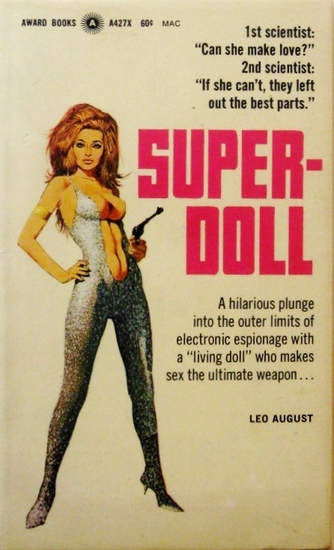 |
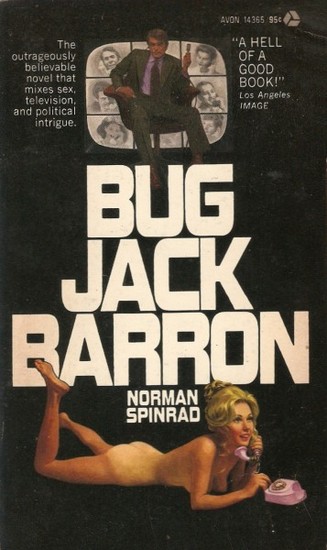 |
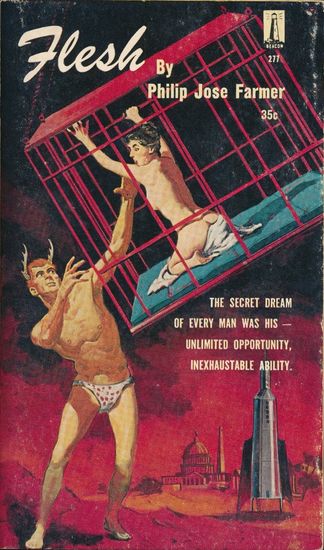 |
Column — The Reference Library, P. Shuyler Miller. This is Analog’s book review column. But first, Miller is gonna talk about sex, baby! After a brief outline of mature SF — Miller thrusts deep into the current crop of dirty sf books.
Superdoll, by Leo August; “Funny — and meant to be — but not worth of anyone’s time.”
Bug Jack Barron, by Norman Spinrad; “The sex and the language belong to his character and his era. They stop the action in its tracks at time, but that’s Jack Barron for you. You may find him tiresome rather than scandalous.”
A three-way from Phillip Jose Farmer:
- Flesh; “[…]he and the publisher intend to be pornography and are consequently pricing at appropriate prices: $1.95 each.”
- Image of the Beast; “But it’s a bad book, and the sex and sadism don’t help it.”
- Feast Unknown; “For this is a sexed up pastiche in which the “real” Tarzan […] feuds with the “real” Doc Savage, assorted baddies, and a powerful clique of bestowers of immortality, the ageless none. […] Feast Unknown is pornography only because Famer intents it to be and because that is what Essex is selling. It could have been a lovely straight parody.”
Washing his hands of the whole sordid set, Miller finds the stamina to move onto seven more books. This is a man who takes his reviewing seriously!
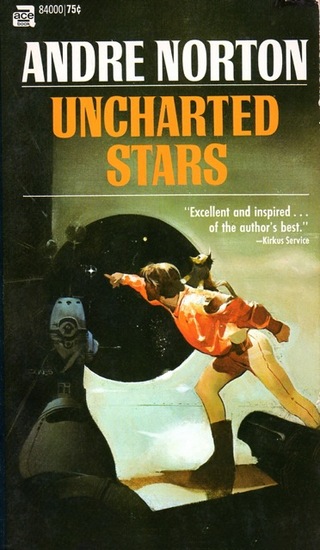 |
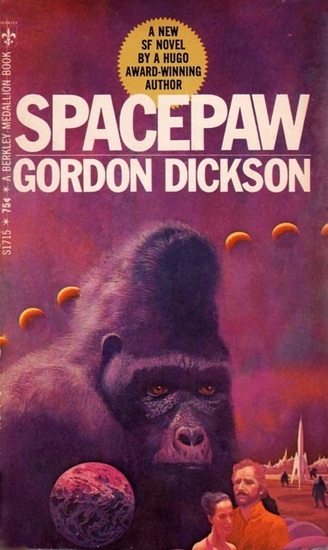 |
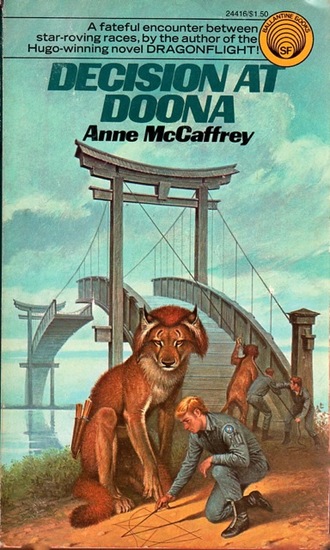 |
Let the Fire Fall by Kate Wilhelm; “This, for my money, is the best novel Kate Wilhelm has done yet.”
The Zero Stone and Uncharted Stars by Andre Norton; “It isn’t her best […] but it proves that space doesn’t have to be boring.”
The Lion of Comarre and The Fall of Night by Arthur C. Clarke. “The story is only a novelette, but as a bonus you have Clarke’s account of the origins of both stories.” He likes these way better than Alexi Panshin did in Fantasy & Science Fiction.
Spacepaw by Gordon Dickson; “It’s a lively, unpretentious action yarn that makes better reading than his recent None But Man” which handles essentially the same theme in a totally different way.”
For the Flag by Jules Verne; “For the Flag has those [submarines] and just about everything else: aircraft, rockets, a scientist with his den inside a volcanic crater, a super-explosive […] and lots of lots of good Victorian melodrama.”
Decision at Doona by Anne McCaffrey; “[…] it introduces an alien race almost as endearing as the Dragons and it offers a timely parable of coexistence.”
Letters Column, Brass Tacks. You know how some words kind of go in and out of fashion? I wasn’t even aware that the word “leotard’ was one of those words—until this letters column was full of discussions about an article in previous Analog about “space leotards.’ Some death penalty discussions also take place, but the best letter would have to be one that tries to untangle a web of mistaken identity:
I am John R. (Robinson) Pierce, sometimes J. J. Coupling, and once John Roberts. I love all editors […] I love all s-F writers, more or less […] I love all critics […] And, of course, I love all fans.
I am not John J. Pierce; I have not written against the new wave. I have not written critically about individual writers or editors. I am not the founder of the Second Foundation. I am not now either criticizing or praising what John J. Pierce has written.
To sum up: Galaxy is still on top, and I’m afraid that Analog (this issue, at least) falls pretty short, although it does have the most artwork of the magazines I’ve reviewed so far. Environmental/pollution issues are also still being explored in Analog, as it has been in every magazine from November 1969 that I’ve read so far — so clearly that was big in the late 60s. Analog is open in its embracing of the recent moon landing, right out front. But they seem to lose that real-world credit with the whole telepathy and psi thing. Campbell’s worst tendencies seem to be on display and it is sobering and tragic that Mr. Campbell will pass away in six months.
Venture Science Fiction is up next and will finish off 1969!
Adrian Simmons is an editor for Heroic Fantasy Quarterly. His last review for us was the July/August 2017 issue of The Magazine of Fantasy and Science Fiction.
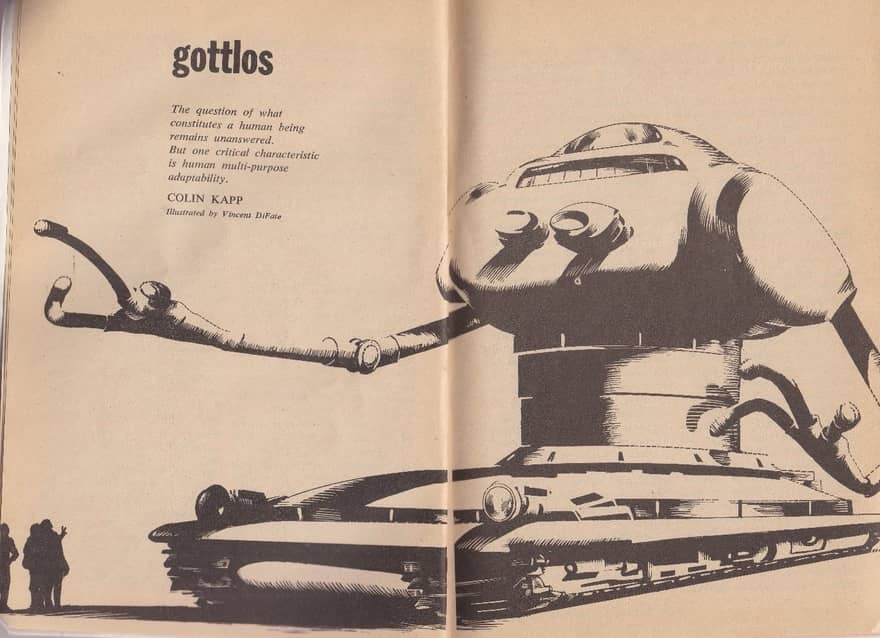
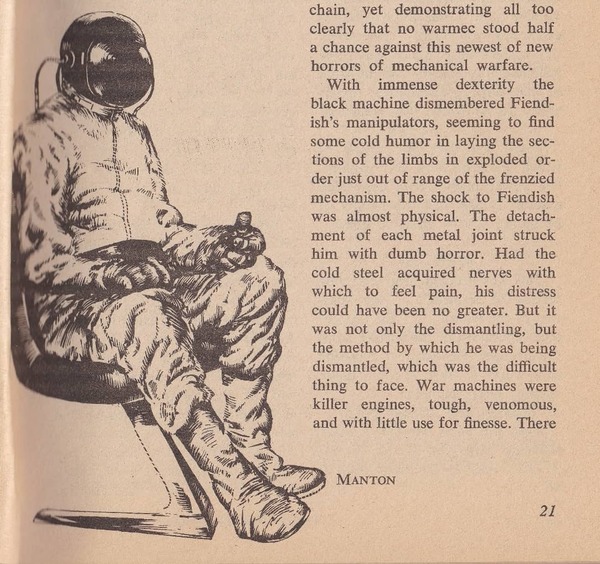
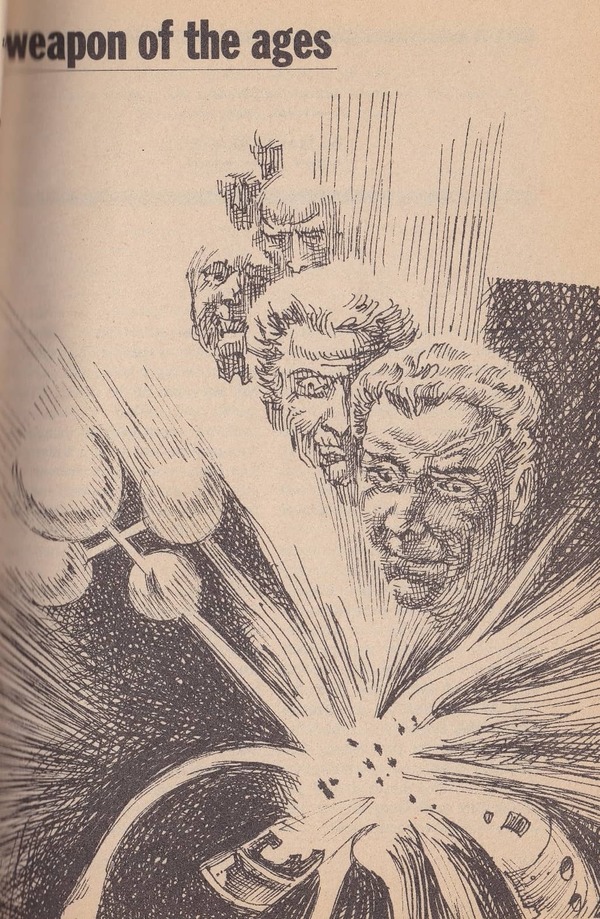
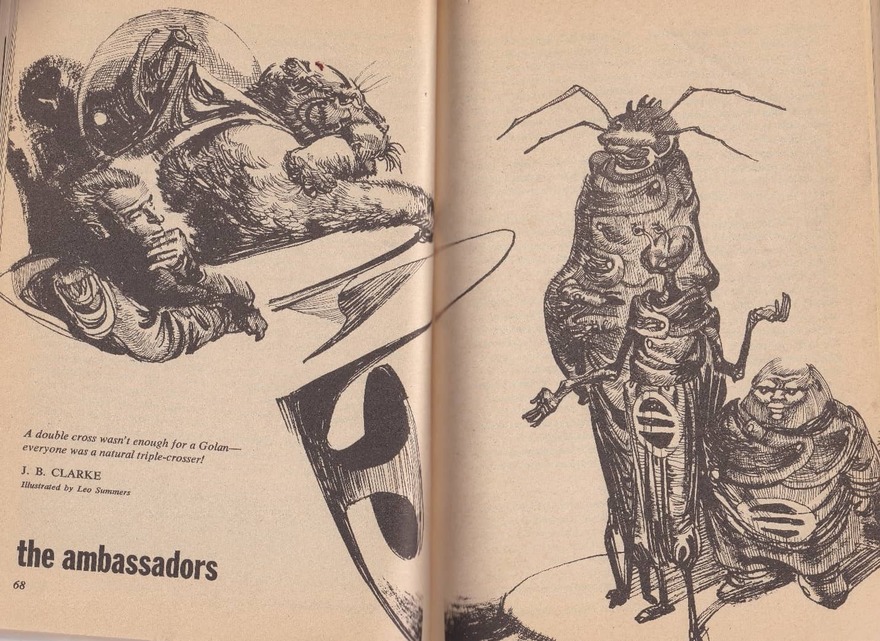
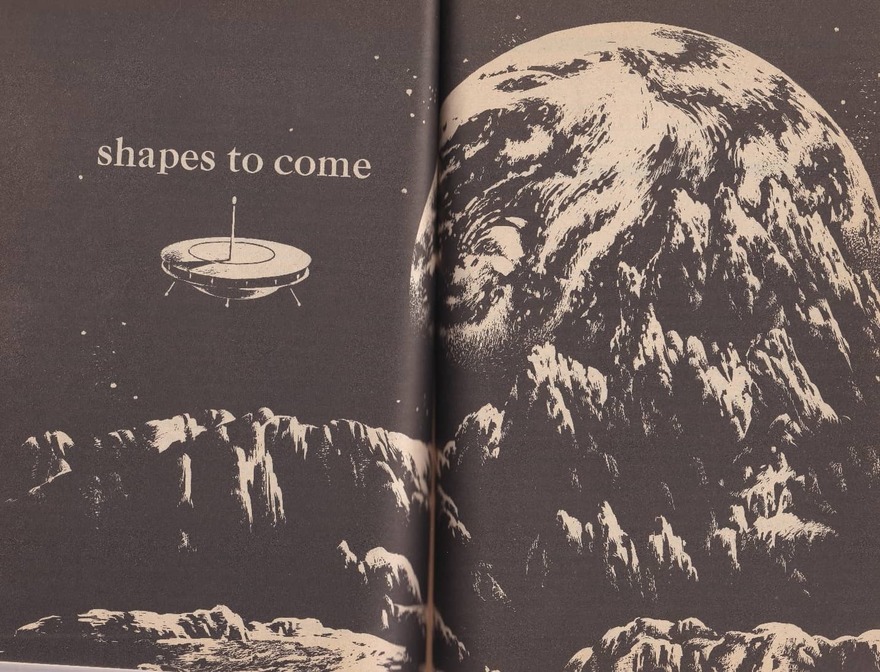
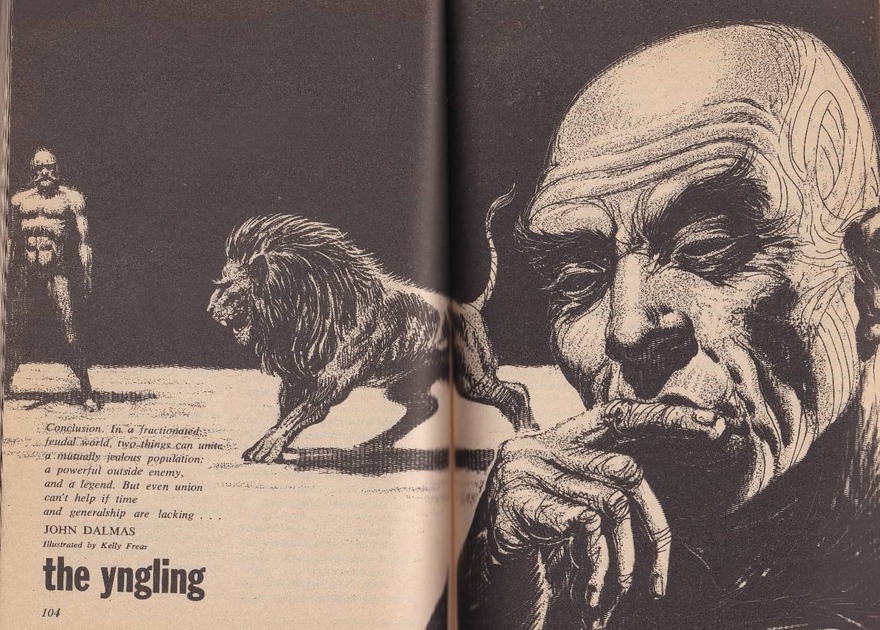
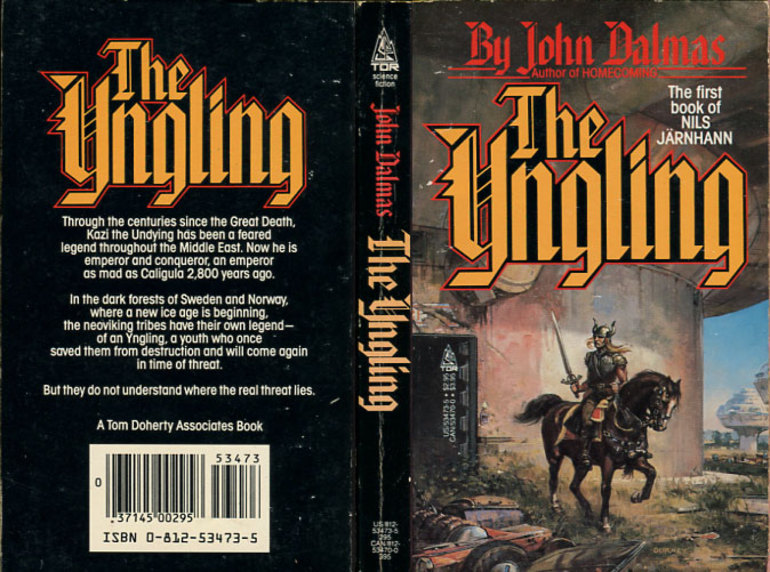
I love the retro-reviews because we get a taste of authors whose work hasn’t stood the test of time, side-by-side with the greats. The main thing I wanted to point out is that one of the authors whose book was reviewed, Kate Wilhelm, passed away within the past day or so. I’m glad it was such a positive review.
It was a real loss to love Kate Wilhelm. She wasn’t just a great author, but she was intimately involved with the field, and was one of our last links to the early history of science fiction.
Colin Kapp was never a “major” writer and is almost completely forgotten today, but he produced one novel that is well worth anyone’s attention, even now – Transfinite Man. It’s strong enough to stand comparison with Alfred bester’s work.
Interesting typo, John!
Indeed, it was a loss — one of our great writers. (And the fact she was never name Grand Master makes me even sadder.)
I enjoyed the review as a whole — I’ve seen that issue before, with the, er, intriguing title “Gottlos”, but I’ve not read it.
Amy, that is one of the best things about reading these old magazines– you get to see the famous writers when they sometimes were not so famous, or not so famous yet.
Kate Wilhelm’s death is very unfortunate, and I’m glad that the review referenced was a positive one.
Thomas Parker- I liked “Gottlos” quite a bit, even though it was Germanic and bleak. If “Transfinite Man” is about cyborgs, I AM THERE.
John, James Gunn is still kicking at the University of Kansas. Also, here is a link to Ms. Wilhelm’s GoH speech from the 1980 WorldCon– https://www.youtube.com/watch?v=4uj9VqZMPkM
Decadal – thank you for adding to my list of words that I have to look up.
Thanks for mentioning the “dark lord” and “orcs” in Dalmas’s serial. I have a special interest in tracking 1965-1969 period references and allusions to Tolkien and writing them up for the ‘zine Beyond Bree. This tidbit was suitable for mentioning in one of my Days of the [Hobbit] Craze columns.
Dale Nelson
Barsoomia- Decadal is the a 10cent word that you can use every ten years!
Dale Neslon: Glad that I could be of service. Dalmas, in spite of my negative review, went on to sell many books about Nils. Shows what I know!